From]Carcharodon hastalis (Agassiz, 1838) to Carcharodon carcharias (Linnaeus, 1758)
| We have examined the teeth of a sharks from the Senhata Conglomerate menber,
Amatsu Formation, Late Miocene of Japan, which is considered to be in the
transitional stage from C. hastalis to C. carcharodon. The production of transitional shark teeth from the Amatsu Formation
was about 7% of that of C. hastalis from the same Amatsu Formation for the upper teeth. No such teeth were
found in the lower teeth. The serrations of the teeth obtained here range
in condition from inconspicuous teeth that seem close to those of C. hastalis to those with well-defined serrations like those of the present-day great white. Note that sharks in transitional states are not treated here as a single taxon. |
| Figure 1: Four shark teeth showing typical features of "the transitional great white shark" examined. |
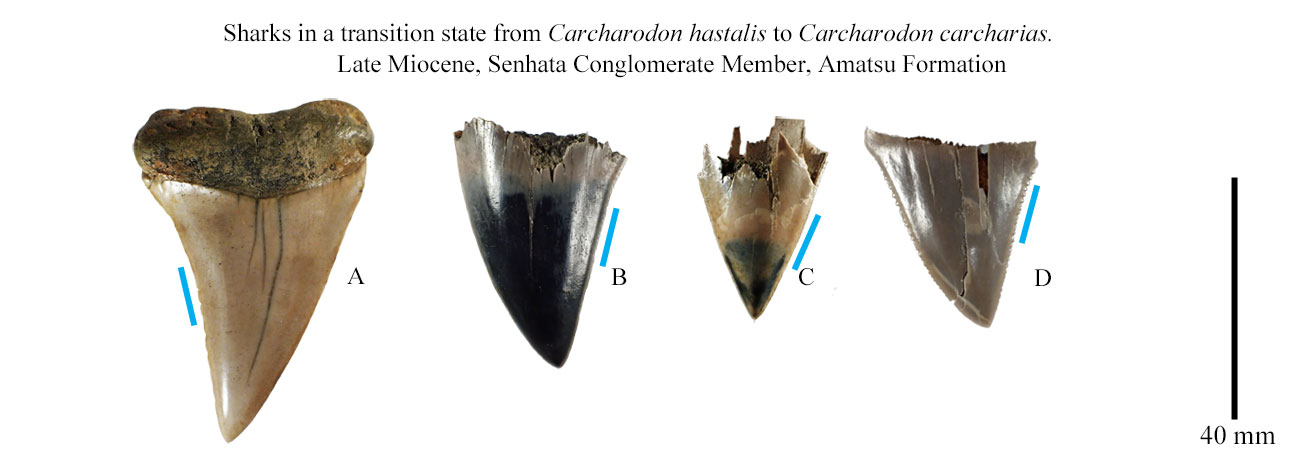
| Figure 2. Enlarged view of the srrated area indicated by the blue line in Figure 1, showing the "wavypattern" of serrations. |
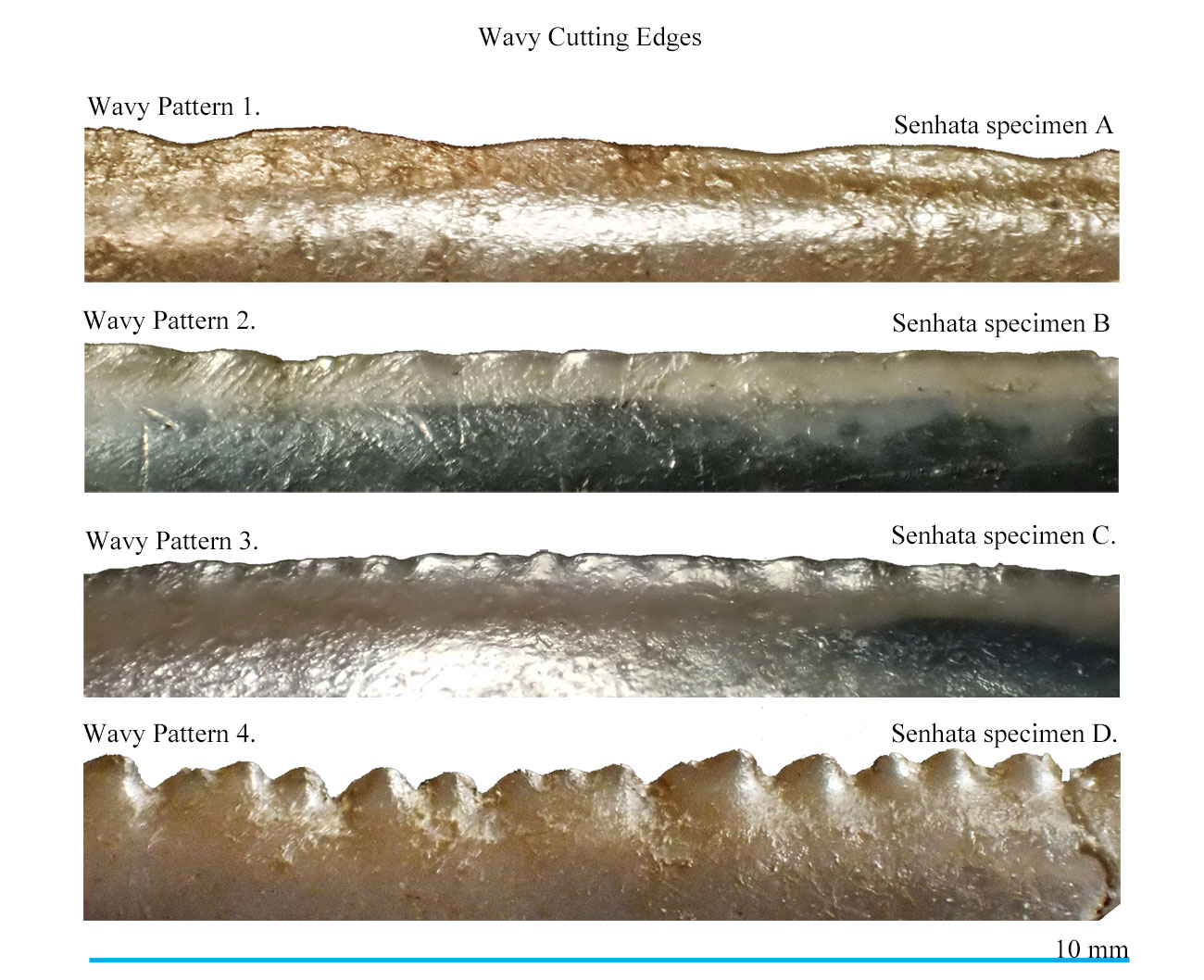
| The serrations of specimen C shown in Fig. 1. are very similar to those of Carcharomodus escheri (Agassiz, 1843). |
| Figure 3. shows two teeth of Carcharomodus escheri and their serrations. |

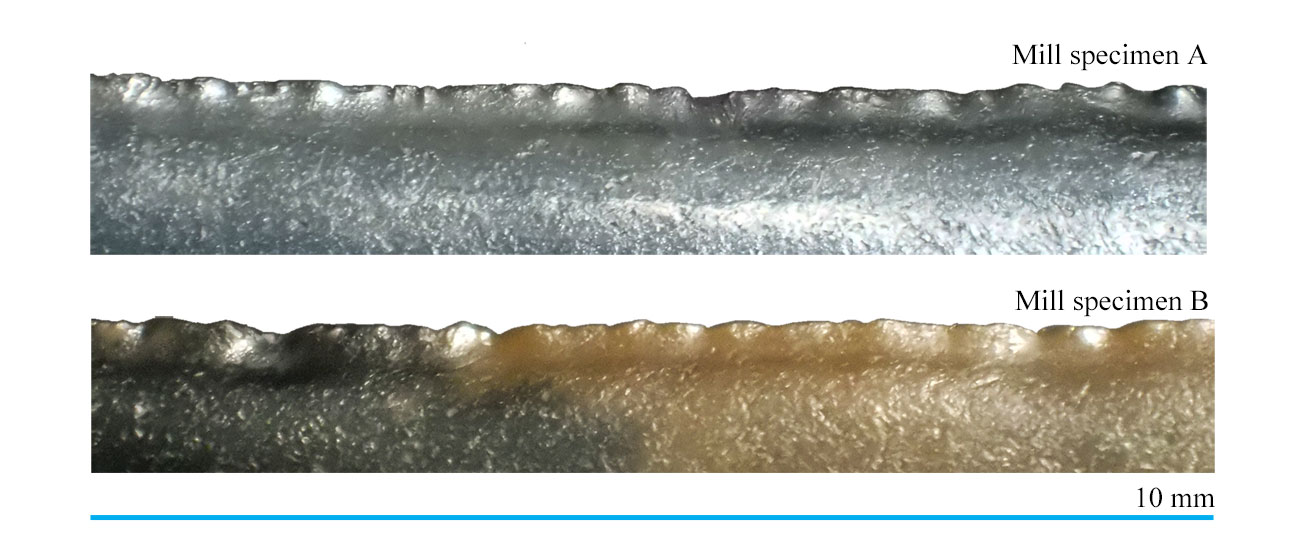
| The teeth of the transitional sharks from the Amatsu Formation are highly diverse. This may indicate frequent interbreeding between individuals with teeth similar to those of the great white and those without the serrations of the mako shark.. |
| The wavelength & wavenumber of the great white sharks |

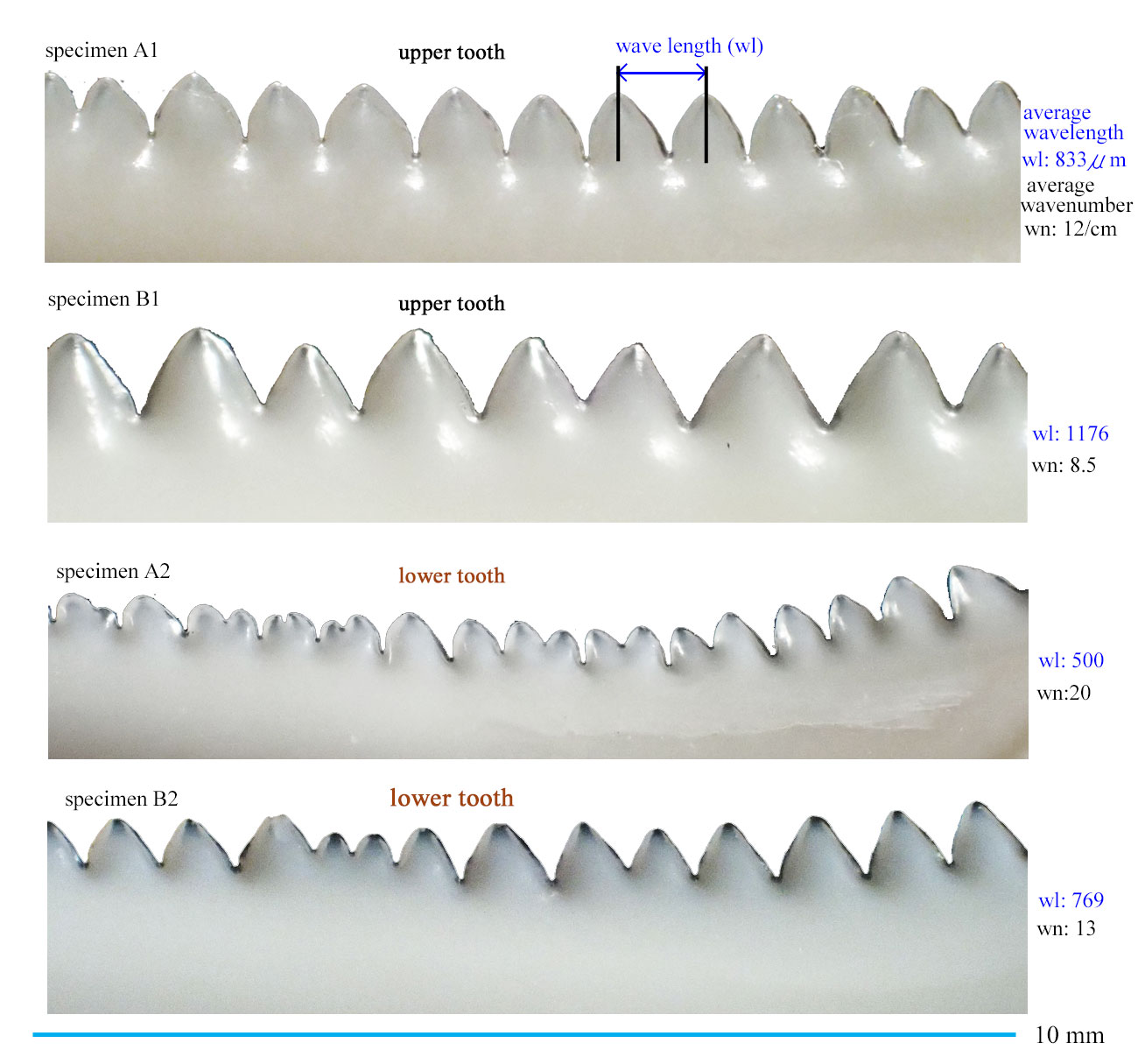
| Sharks of the genus Carcharodon from other localities in Japan |
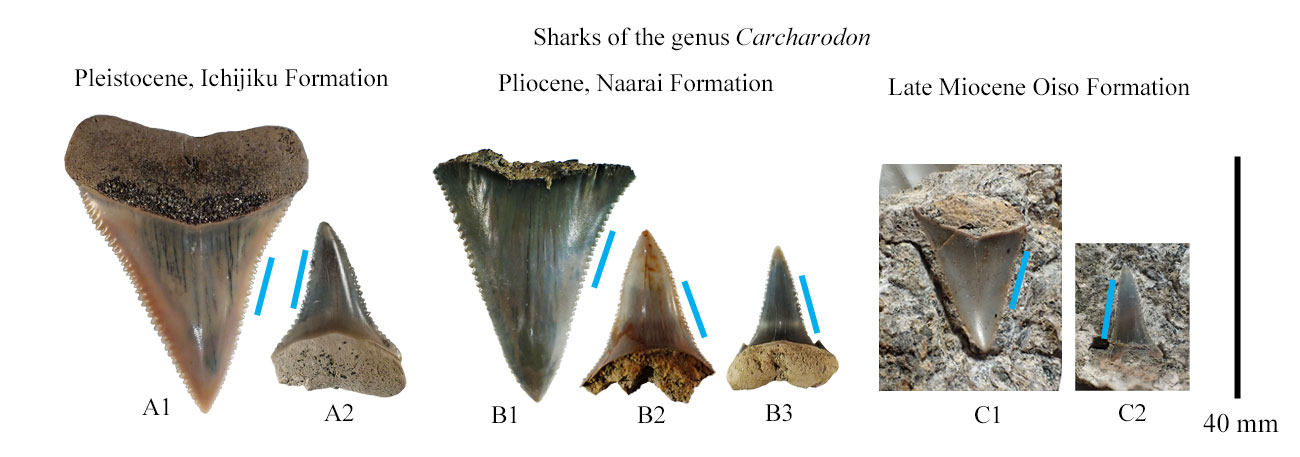
| The serrations of shark teeth from these three localities |
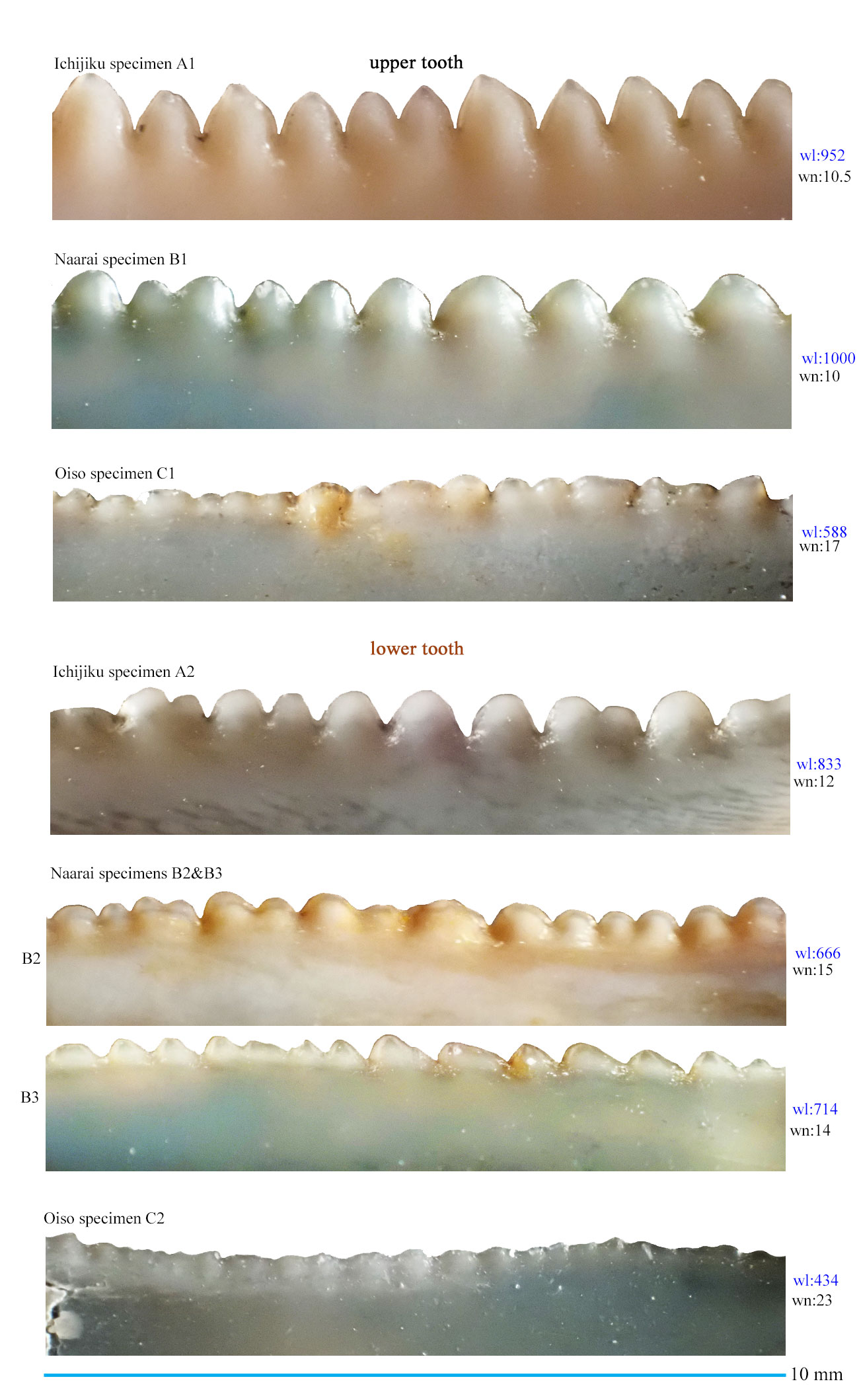
| Both the upper and lower teeth of sharks from the Pleistocene Ichijiku
Formation showed morphologies that appeared to be identical to those of
the extant great white sharks. The upper teeth of sharks from the Pliocene Naarai Formation showed the same morphology as those of the present-day great white sharks, while the serrations on the lower teeth were not stable, indicating that they were still transitional teeth. Overall, the Naarai Formation sharks are considered to be sharks in the final stages of transition. Shark teeth from the Late Miocene Oiso Formation are considered to be in a similar or slightly more advanced state of transition than those from the Late Miocene Amatsu Formation. |
| Oiso Formation: Calcareous nannofossil Zone CN9, Lower Messinian, 8.28 - 5.54 Ma Ito, M. (1986) Neogene depositional history in Oiso Hill : Development of Okinoyama Bank chain on landward slope of Sagami Trough, central Honshu, Japan. Jour. Geol. Soc. Japan, 92(1), p.47-64. |
Nov. 06, 2023 ver. 1: Nov. 01, 2023